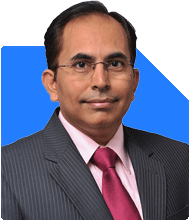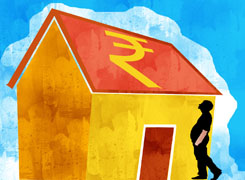Can I Sell My Apartment for 199 Lacs After Having Purchased It for Rs.20 Lacs?
Janak Patel |71 Answers |Ask -Follow
MF, PF Expert - Answered on Oct 18, 2024
He is the CEO and founder of InfiniumWealth, a firm that specialises in designing goal-specific financial plans tailored to help clients achieve their life goals.
Janak holds an MBA degree in finance from the Welingkar Institute of Management Development and Research, Mumbai, and has over 15 years of experience in the field of personal finance. ... more

I bought an apartment in Delhi in the year 2002 for 5 lacs (own funds) Plus 15 lacs bank loan for 15 years at interest rate of 10%. Now want to sell it for199 lacs. Please advise on following 1. How to work out cost of acquisition considering interest paid on bank loan and expenses incurred from time to time to upkeep the flat around 5 lacs. I don't have bank interest certificate. 2. What will be capital gains tax calculation if I sell it now with both options old v/s new. Please advise. Raghav.
At the high level the below should help you.
1. Cost of acquisition can include the purchase price and the cost of improvement, so the upkeep expenses to maintain the property cannot be consider, but if you made any form of addition/alterations to the property then you can include it.
The interest paid on loan is eligible for tax benefits, it cannot be included in the cost of acquisition.
2. Old Rule - using the CII for calculations indicate Capital gains of Rs130 lacs, the capital gains tax (20% on difference after indexation) works out to be approximately Rs26 lacs. Note exact dates of purchase/sale will determine the CII values to be used, assumed FY2002-3 and FY2024-25 for now.
New Rule (2024 budget) - Capital gains = difference of sale and cost price i.e. Rs179 lacs, tax of 12.5% on it is approximately Rs22 lacs.
Note - you can add/reduce the cost/sale price with expense incurred in transacting the property e.g. brokerage.
Options to save tax on the Capital gains amount
1. Reinvest in another residential property within 1 year prior and 2 years after sale date or construct within 3 years after sale date.
2. Invest in NHAI bonds - has lock-in period and the interest earned is taxable.
Please contact a CFP or a Tax consultant for further guidance.
Regards
Janak Patel
Certified Financial Planner.
You may like to see similar questions and answers below
Mahesh Padmanabhan | Answer |Ask -Follow
Tax Expert - Answered on May 20, 2023
Tejas Chokshi | Answer |Ask -Follow
Tax Expert - Answered on May 29, 2023
Mihir Tanna |1090 Answers |Ask -Follow
Tax Expert - Answered on Oct 11, 2025
Radheshyam Zanwar |6744 Answers |Ask -Follow
MHT-CET, IIT-JEE, NEET-UG Expert - Answered on Dec 14, 2025
Radheshyam Zanwar |6744 Answers |Ask -Follow
MHT-CET, IIT-JEE, NEET-UG Expert - Answered on Dec 14, 2025
Dr Dipankar Dutta |1840 Answers |Ask -Follow
Tech Careers and Skill Development Expert - Answered on Dec 14, 2025
Dr Dipankar Dutta |1840 Answers |Ask -Follow
Tech Careers and Skill Development Expert - Answered on Dec 13, 2025
Dr Dipankar Dutta |1840 Answers |Ask -Follow
Tech Careers and Skill Development Expert - Answered on Dec 13, 2025
Mayank Chandel |2575 Answers |Ask -Follow
IIT-JEE, NEET-UG, SAT, CLAT, CA, CS Exam Expert - Answered on Dec 13, 2025
Radheshyam Zanwar |6744 Answers |Ask -Follow
MHT-CET, IIT-JEE, NEET-UG Expert - Answered on Dec 13, 2025
Mayank Chandel |2575 Answers |Ask -Follow
IIT-JEE, NEET-UG, SAT, CLAT, CA, CS Exam Expert - Answered on Dec 13, 2025
Mayank Chandel |2575 Answers |Ask -Follow
IIT-JEE, NEET-UG, SAT, CLAT, CA, CS Exam Expert - Answered on Dec 13, 2025
Kanchan Rai |646 Answers |Ask -Follow
Relationships Expert, Mind Coach - Answered on Dec 12, 2025


























